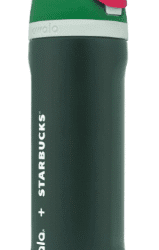Key Takeaways:
- Population Growth: The UK population is expected to surpass 70 million by 2030, driven by net migration.
- Economic Challenges: Disposable income levels are unlikely to grow significantly, leaving shoppers feeling worse off. Shopper confidence will remain below zero, with 45% of shoppers eating reasonably healthily but regularly having less healthy treats, an 11% rise from 2024.
- Health and Sustainability: Only 6% of shoppers will eat healthily all the time, and 24% will not consider the impact on the environment as an important factor in food and grocery purchases.
- Emotional Connection: Food and grocery products can create meaningful experiences, helping shoppers bond, share, and connect.
The IGD “Shoppers in 2030” report reveals critical insights into the future of the food and grocery industry. As single households are projected to contribute 95% of the overall growth in the number of households, the growing population will create a higher demand for housing. With disposable income levels unlikely to grow significantly, shopper confidence will remain subdued, impacting volume spending.
However, the food and grocery industry will be somewhat protected compared to other industries, but retailers must build emotional connections with shoppers.
The report highlights the need for retailers and manufacturers to manage the growing demand and produce the right products for the right shopper.
The industry must tackle sustainability and health issues despite low shopper confidence. Understanding these trends helps businesses plan and adapt their strategies to meet shoppers’ evolving needs.
“The outlook is far from positive news for retailers and manufacturers. We expect shoppers to continue spending with caution for the foreseeable future, especially those on a lower income. This means volume challenges are set to continue. The silver lining for food and grocery is that shoppers will still look to treat themselves in small ways. Retailers and manufacturers should look for ways to help shoppers elevate the everyday with small, affordable treats,” says Bryony Perkins, senior insights analyst.
Potential Challenges and Opportunities:
- Economic Flatlining: Food and grocery businesses are in a unique position even when the economic outlook for shoppers is tough. Essential products, such as food and groceries, have the power to bring people together to bond, share, and connect. By focusing on this emotional connection, businesses can create meaningful experiences for consumers. This should be a core focus for businesses over the coming years to remain relevant and resilient in the face of economic challenges.
- Strategic Planning: Retailers typically plan 12-18 months ahead, but this report will enable them to think more strategically about their longer-term plans by understanding future shopper behaviour. The report combines economic forecasts, retailer forecasts, and shopper confidence indices to create a powerful piece of research that will be hard to replicate.
IGD subscribers are invited to join our upcoming webinar to discover more about what to expect in 2030.
To download “IGD’s Shoppers in 2030” article please visit https://www.igd.com/Commercial-Insight/ShopperVista/Articles/Shoppers-in-2030-an-overview/55833.
Two reports supporting the webinar will be also available on the IGD website to IGD subscribers.








